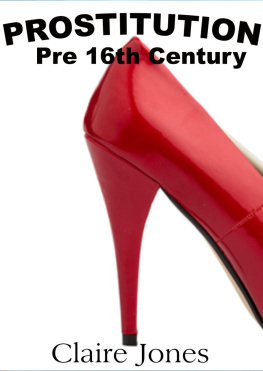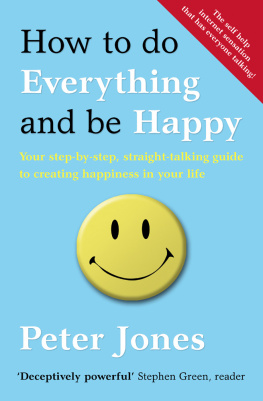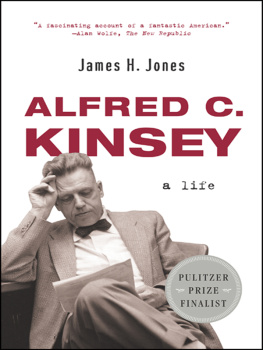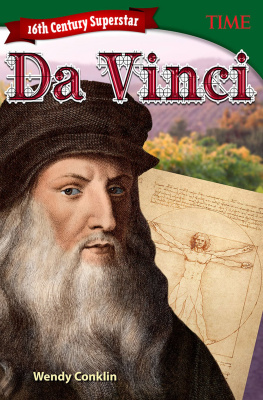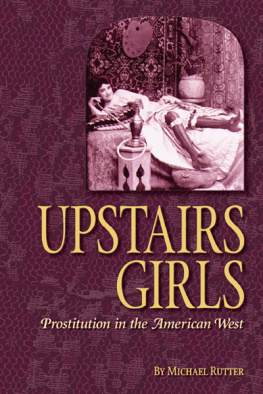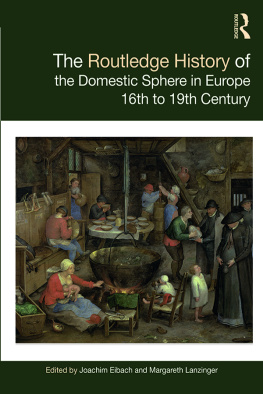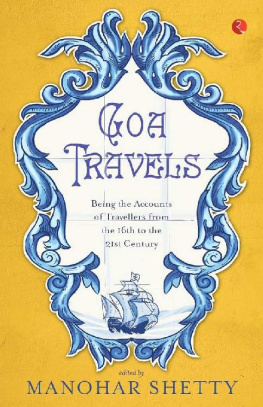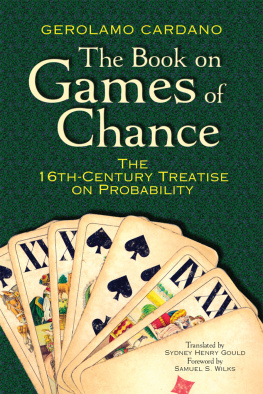Jones - Prostitution: pre 16th Century
Here you can read online Jones - Prostitution: pre 16th Century full text of the book (entire story) in english for free. Download pdf and epub, get meaning, cover and reviews about this ebook. year: 2013, genre: Non-fiction. Description of the work, (preface) as well as reviews are available. Best literature library LitArk.com created for fans of good reading and offers a wide selection of genres:
Romance novel
Science fiction
Adventure
Detective
Science
History
Home and family
Prose
Art
Politics
Computer
Non-fiction
Religion
Business
Children
Humor
Choose a favorite category and find really read worthwhile books. Enjoy immersion in the world of imagination, feel the emotions of the characters or learn something new for yourself, make an fascinating discovery.
- Book:Prostitution: pre 16th Century
- Author:
- Genre:
- Year:2013
- Rating:4 / 5
- Favourites:Add to favourites
- Your mark:
- 80
- 1
- 2
- 3
- 4
- 5
Prostitution: pre 16th Century: summary, description and annotation
We offer to read an annotation, description, summary or preface (depends on what the author of the book "Prostitution: pre 16th Century" wrote himself). If you haven't found the necessary information about the book — write in the comments, we will try to find it.
Prostitution: pre 16th Century — read online for free the complete book (whole text) full work
Below is the text of the book, divided by pages. System saving the place of the last page read, allows you to conveniently read the book "Prostitution: pre 16th Century" online for free, without having to search again every time where you left off. Put a bookmark, and you can go to the page where you finished reading at any time.
Font size:
Interval:
Bookmark:
PROSTITUTION
PRE 16 th CENTURY
Claire Jones
PUBLISHED BY:
Shakti
Copyright 2012
All rights reserved.
No part of this publication may be copied, reproduced in any format, by any means, electronic or otherwise, without prior consent from the copyright owner and publisher of this book.
The author does not claim responsibility for the originality of ideas nor for irresponsible practice.
____________________________________________
TABLE OF CONTENTS
PROSTITUTION PRE 16 th CENTURY
Introduction
In Ancient Greece, sacred prostitution was a common practice, and there were many shrines dedicated to deities depicting its use. Both men and women practiced it.
Slaves were often sold as prostitutes even though the slave themselves may never have wished to enter into prostitution. Especially during the expansion of the Roman Empire, many men, women and even children were captured and sold as prostitutes.
In Asia prostitution has always been generally forbidden.
During the middle Ages in the Roman Catholic Church it was said to be objected yet allowed because they believed it was the lesser of two evils. It was believed that were it to be forbidden then the power of lust would overpower men and cause them to commit more crimes.
With the spreading of sexual diseases at the end of the 16 th century attitudes began to harden against prostitution.
In the last few decades America has called for jail sentences up to fifteen years if a prostitute is knowingly HIV positive and engages in sexual services.
This book looks at the lives of prostitutes across the ages with profiles on individual women.
Prostitution is known to be the oldest profession to man, and has remained a world of fascination to those who observe from the outside, and those who operate within its walls
So in itself what exactly constitutes prostitution? Generally it is the receiving of some form of monetary value in exchange for a sexual service.
It is said that the amount of money generated worldwide from prostitution is over 100 billion dollars a year. However, its legality varies from country to country. In some places people are fined and imprisoned and it others it goes on completely unregulated.
Sometimes there are specified places for the offering of prostitution and there also exist traveling prostitutes in the form of escorts.
The Latin word prostitute is the derivative of the word prostituta, pro meaning to offer up or serve. The. word traveled down over the centuries into our language today. Yet there are different varieties, a call girl for instance arranges sexual meetings over the telephone, whereas a streetwalker would find clients in out on the street.
ASPASIA
Known for her relationship with the Athenian leader, Pericles, Aspasia was both a teacher and philosopher. She was skilled and knowledgeable in politics. It is said her house was a home for young courtesans.
Socrates himself, the great philosopher was known to visit her and appreciated her for her knowledge. Her eloquence was famed far and wide, and she instructed people in the art of speaking.
Plato is also known to have acknowledged her intelligence.
Aspasia became a hetaera. These women were generally independent from men, could own property and were well educated. Many credit her with educating Socrates with some of his greatest wisdom.
TAMAR
In Hebrew her name means date palm
Born in Palestine in 1652 she died in Egypt almost fifty years later. She was a courageous woman who was a childless widow. Her husband was the son of Judah and named Er. He was said to wicked in Gods eyes that killed him. After her husbands death, she married her husbands brother in order that her children would keep their name and inheritance.
However, in order to preserve his inheritance, Ers brother Onan, who had married Tamar purposefully, withdrew his penis during intercourse in order not to impregnate her. She was left alone again after her second husband died. The brothers father Judah, then blamed her for the death of his children.
Judah had a younger son, Shelah, yet he did not want his youngest to marry Tamar for fear that he would die.
Judahs wife later died and Tamar led him into her bed, yet she had disguised herself. In order to bear a child she disguised herself as a sacred prostitute and slept with her father in law, Judah.
She gave birth to two twins, Zereh and Perz. She thus also gives Judah back her two sons, after he has lost two.
The bible describes her as being tried as a whore, yet in Judaism she is considered a virtuous woman, showing determination and courage.
PHYRNE
A courtesan of Ancient Greece, was known for her striking, stunning and mesmerizing
beauty, said to hypnotize men and make her an abundantly wealthy lady. She was educated and sophisticated and incredibly charming.
She was born around 371 BC, daughter of Epicles and lived her early life in Athens.
Her beauty was incredible and her fame spread in the festivals of Poseidonia. In these festivals, she loosened her hair, uncovered her naked body and would step into the sea, in full sight of everybody entrancing the onlookers with her beauty.
She made so much money and became so wealthy it is said she offered to pay for the rebuilding of the walls of Thebes.
Her beauty has inspired many paintings and statues. There are different accounts of her trial as she was charged in court, yet it is difficult to ascertain the validity of these accounts. It is also claimed she was defended by one of her lovers.
LUDI FLORALES
In Renaissance thought she is believed to have been a human prostitute turned goddess. She inspired the Floralia festival, which is a Roman festival associated with prostitutes.
She became Goddess of all that blooms, associated with spring.
Ancient Romans celebrated the festival during the last week of April and beginning of May. So she became the Goddess of flowers.
Many prostitutes would attend the festival in her honor. They would enact nude dances and stamp the day as their own. Beginning around 170BC it was said that it was the work of Flora herself that first funded the festival in honor of all that blooms.
LAIS
th century BC
A stunningly beautiful lady, born in Corinth. She was also very expensive. She exchanged vast sums of money for her services and became known worldwide for her beauty. She was also said to have been highly intelligent and charming.
Said to have been by far the most attractive of ladies, she lived during the Peloponessian war.
The philosopher Aristippus wrote about her, and was also said to be her lover. Another of her lovers was said to include Eubota
Of Cyrene the Olympic champion.
THEODORA
th century
Empress of Byzantium 527-548
She became the first mistress of Justin while working as a wool spinner and actress. In order to marry her, Justin changed the law that forbade a patrician from marrying an actress. She greatly influenced the political structure of the empire and was treated as an intellectual equal by her partner Justin.
She is known to have changed laws increasing womens rights and closed brothels, turning them into self-supporting convents.
She was the daughter of a bear-trainer and her mother was an actress and dancer. Theodora herself grew to be an actress and earned her livelihood form these means as well as her sexual services.
During the Nika riots she proved herself to be a leader and is said to have saved the throne of Justinian during her speech, which united the two political rivals of the Empire.
As wife of Justinian the Emperor she was perhaps the most powerful woman of the Roman Empire. In her early years as an actress her beauty, wit and charm had earned her the attentions of Justin, yet at that time there was a law, which forbid Emperors from marrying actresses. Justin fell so in love with her that he changed that law and married her.
Next pageFont size:
Interval:
Bookmark:
Similar books «Prostitution: pre 16th Century»
Look at similar books to Prostitution: pre 16th Century. We have selected literature similar in name and meaning in the hope of providing readers with more options to find new, interesting, not yet read works.
Discussion, reviews of the book Prostitution: pre 16th Century and just readers' own opinions. Leave your comments, write what you think about the work, its meaning or the main characters. Specify what exactly you liked and what you didn't like, and why you think so.

